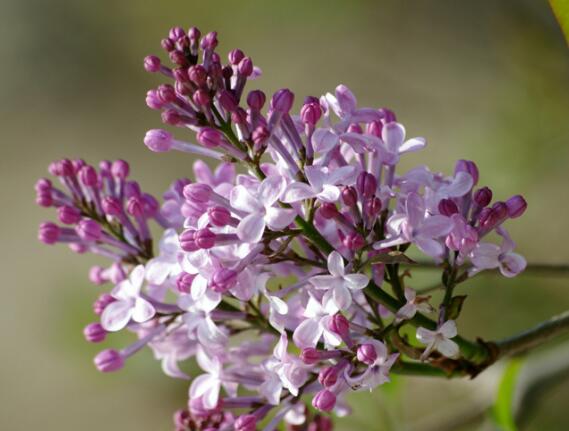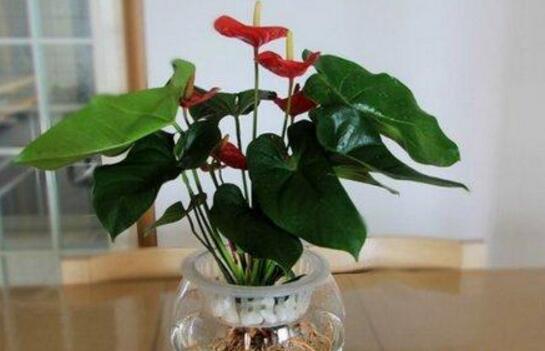How to raise and grow lilacs, the breeding methods and matters needing attention of lilac flowers
Lilac is a common flower in people's life, has a high ornamental value, so many people will cultivate a plant at home, so how to raise lilac is better? What is the cultivation method of clove flowers? The following small series takes everyone to understand.
1. How to cultivate lilac flowers

If you want to know how to grow lilacs, first of all, we have to know its growth habits. Lilacs are a light-loving plant, so we must keep sufficient light when breeding, but there are many aspects to pay attention to. There are detailed descriptions in the cultivation methods of lilacs below. You can understand them.
2. Cultivation methods of clove flowers
1. soil selection
In the cultivation of lilacs, the choice of soil is more important, and choosing the right soil for its growth is very helpful. In terms of soil, we can generally choose fertile sandy soil, which has better drainage and will be more conducive to clove absorption of nutrients.
2. temperature control
Among the cultivation methods of lilacs, temperature control is a point that needs to be paid attention to. Lilac flowers like a humid environment, the most suitable environment for their growth between 15-22°C, lilac flowers have a certain cold resistance, so the temperature is slightly the first point can also grow, but not too low, the general temperature is lower than 3°C, then it may be frostbite.
3. watering management
There is no specific frequency for clove watering. Generally, the principle of dry watering can be maintained. The frequency depends on the environment. In summer, water evaporates faster. We can increase the watering frequency and reduce the watering amount in winter.
4. lighting requirements
In the cultivation method of lilac flowers, light is a very important part, so it must not be less light, in the spring and autumn when the weather is suitable can receive light all day, in the summer when the sun is too strong, you can move the lilac flowers indoor semi-shade cultivation, so that it can not sunburn it can also receive light.
5. Pay attention to weeding
With the growth of lilacs, some weeds will grow in the pot soil. This is what we have to make clear. Only by removing weeds can lilacs grow better. When clearing weeds, it is best to pull them out by hand. Do not turn the soil with a hoe or other things. It is easy to hurt the roots. We should pay attention to this point.
6. pest control
In the process of cultivating clove flowers, if not carried out according to the above methods, resulting in defects in the cultivation process, it is easy to cause diseases and insect pests, in the occurrence of such problems we must deal with in time, otherwise it is easy to cause the whole plant to die. You can refer to the article on pest control of lilac flowers for details.
How to raise lilacs? What are the cultivation methods and precautions of clove flowers?
How do you grow cloves? What are the cultivation methods and precautions of clove flowers?
[Expert Answer]
Curing tips for lilacs:
1, soil: clove resistance is strong, the soil requirements are not high, suitable for fertile, loose, well-drained soil, low-lying and humid places difficult to grow.
2, watering: clove adaptability is strong, nursing methods are more extensive, usually as long as pay attention to weeding, rainy season waterlogging prevention, pay attention to watering in drought, you can grow smoothly.
3, sunshine: lilac love plenty of sunshine, but also resistant to half shade, so pay attention to planting in a place that can provide enough sunshine.
4. Temperature: clove likes tropical island climate. The climate characteristics of the original producing area belong to equatorial rainforest climate. The lowest monthly average temperature is 21℃. When the low temperature reaches 3℃, it can lead to plant death.
5, fertilization: clove does not like big fertilizer, avoid excessive fertilization, so as not to cause excessive growth of branches, affecting flowering. Generally, compost can be applied once a year or every other year before winter.
6, pests: clove pests are very few. The main pests are aphids, pocket moths and spiny moths. 800~1000 times of 40% dimethoate emulsion or 1000 times of 25% dimethion emulsion can be sprayed for control.
7, pot turning: every 2~3 years pot turning once, combined with pot turning, pruning roots, remove part of the old roots and long roots, remove 1B2 old soil, replace with new culture soil, to facilitate root development, leaf luxuriant flowers.
8. Pruning: Before clove sprouts in the middle of March, it is necessary to prune clove, remove dense branches, thin branches and diseased branches with sulfur, and cut off long branches in the middle to make the crown ventilated and transparent. If there is no seed left after the flower withers, the residual flower can be cut off together with the two buds at the lower part of the flower spike to reduce nutrient consumption and promote the germination of new branches and the formation of flower buds. After defoliation, you can also carry out a pruning to keep the crown round and beautiful, which is conducive to growth and flowering in the coming year.
Notes on planting cloves:
1, young stage before the typhoon to do a good job of wind prevention work, can use rope and bamboo fixed clove plant trunk, in order to reduce the typhoon on clove plant shaking, thus reducing harm.
2. Weed around clove plants in July, September and October each year, and cover the plants with grass, but do not turn them over with hoe to hurt the fragrant roots. Weeds in other places on the woodland are cut off for ground cover, and green manure can also be used to replace natural vegetation to cover the ground. Weed until the canopy is closed and weed growth is inhibited.
3. After planting 3-4-year-old seedlings, strong pruning should be carried out on the branches on the ground, that is, cutting off the trunk from 30 cm above the ground. After cutting off the trunk, strong branches can grow quickly, so that the crown is full, and lush flowers can be opened in the second year.
[Small editor comments] Lilac is not difficult to raise, but also pay attention to breeding methods, it has its own conservation skills and some matters needing attention, the above first agricultural economics small editor for you to introduce the cultivation methods and precautions of lilac, want to know more relevant information such as "lilac plant information introduction""lilac planting methods and potted methods", please pay attention to our website science and technology channel planting technology column.
The cultivation methods and precautions of clove flowers
Beautiful clove many people have seen, but also especially like it, some people want to make it potted at home cultivation, but the cultivation method of clove flowers do not know, do not know how it should be raised. Today, I will make a specific introduction to the cultivation method of lilac flowers. I will tell you how to cultivate lilac flowers, and also write out the precautions for cultivating lilac flowers to share with you.
The cultivation methods and precautions of clove flowers
1. The cultivation method of clove flowers
Lilac flowers this plant like sunlight, negative tolerance, like wet environment, avoid ponding, usually can plant it in fertile drainage good pot soil, in addition to lilac flowers every year to change the pot once, when changing pots should apply enough fertilizer, base fertilizer can choose decomposed and compost. Lilac flower This plant is mainly based on seed reproduction. If new lilac flowers are planted, they can be harvested and stored after the autumn flower withers, and planted in the following spring.
2. Pay attention to the temperature when breeding lilacs
Usually, when cultivating lilac flowers, temperature is one of the most important aspects to pay attention to, because lilac flowers are a tropical plant, it likes tropical island climate most, when the outside temperature is between 20 and 30 degrees, this kind of plant grows fastest, when the outside temperature is lower than three degrees, it will stop growing, and when it is serious, it will let lilac flowers die.
3. Pay attention to fertilizer supply when cultivating clove flowers
If you want to raise a good clove flower, the supply of fertilizer is also very important. This kind of plant does not like large fertilizer. You cannot fertilize too much at ordinary times, otherwise it will affect flowering and reduce its ornamental value. In addition, during the growth of clove flowers, aphids or moths sometimes appear. At this time, 800 times of dimethoate emulsion can be sprayed to make pests disappear quickly.
- Prev

How to raise Anthurium andraeanum, the breeding methods and precautions of Anthurium andraeanum / need to learn 6 tips
We know that Anthurium andraeanum has many effects, and the benefits of keeping it at home are innumerable, so more and more people are going to raise several pots, so how to raise Anthurium andraeanum is the best? Here we need to know the culture methods and matters needing attention of Anthurium andraeanum.
- Next

Four seasons maintenance method of Anthurium andraeanum, control light / temperature / learn to put it in the right position
The temperature and humidity will be different in different seasons, so when raising Anthurium andraeanum, the maintenance method of each season is different, so what is the maintenance method of Anthurium andraeanum in the four seasons? Next, we will introduce in detail from the four seasons of spring, summer, autumn and winter. The maintenance method of Anthurium andraeanum in the process of planting Anthurium andraeanum
Related
- Fuxing push coffee new agricultural production and marketing class: lack of small-scale processing plants
- Jujube rice field leisure farm deep ploughing Yilan for five years to create a space for organic food and play
- Nongyu Farm-A trial of organic papaya for brave women with advanced technology
- Four points for attention in the prevention and control of diseases and insect pests of edible fungi
- How to add nutrient solution to Edible Fungi
- Is there any good way to control edible fungus mites?
- Open Inoculation Technology of Edible Fungi
- Is there any clever way to use fertilizer for edible fungus in winter?
- What agents are used to kill the pathogens of edible fungi in the mushroom shed?
- Rapid drying of Edible Fungi

